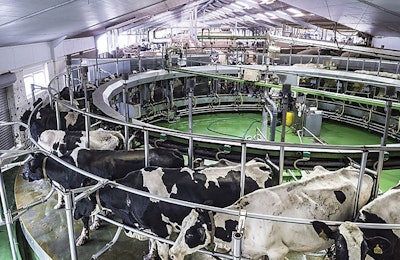
Globally, agricultural livestock account directly for about 9 percent of total anthropogenic greenhouse gas (GHG) emissions. Most people in the ruminant industry are familiar with the publication, “Livestock’s Long Shadow,” that ascribes around 18 percent of the global anthropogenic emissions to livestock production. However, there are fewer people familiar with the response to that paper that attempts to highlight some of the shortcomings of that publication and tries to represent ruminant livestock’s contribution in a more level playing field.
Read the entire report about ruminant environmental impact reductions exclusively in the January issue of Feed Strategy.
Producers are continually reminded, by government, consumers and the media, of the ever-increasing focus on producing high-quality products with lower levels of environmental emissions. For example, the Irish government has set targets to reduce emissions from agriculture by 50 percent by 2050, while the U.K. government is legally required to reduce greenhouse gas emissions across agriculture by 80 percent of the 1990 levels by 2050 -- with an interim target of 11 percent reduction by 2020.
At the same time, despite rising input costs, production must increase to meet demands and businesses must remain profitable.
The consumer media has a tendency to see increasing efficiency of ruminant production in a negative light as far as environmental impact goes. Despite this, producers start to consider that achieving greater efficiency at farm level is an absolute requirement for simultaneously lowering environmental impact and improving the farm’s bottom line.
Numerous innovations implemented over the past 50 years have helped farmers to reduce their environmental impact by doing more with less. For example, a liter of milk is now produced using 90 percent less land, 65 percent less water, 75 percent less manure and a 63 percent smaller carbon footprint compared with 1944.

















